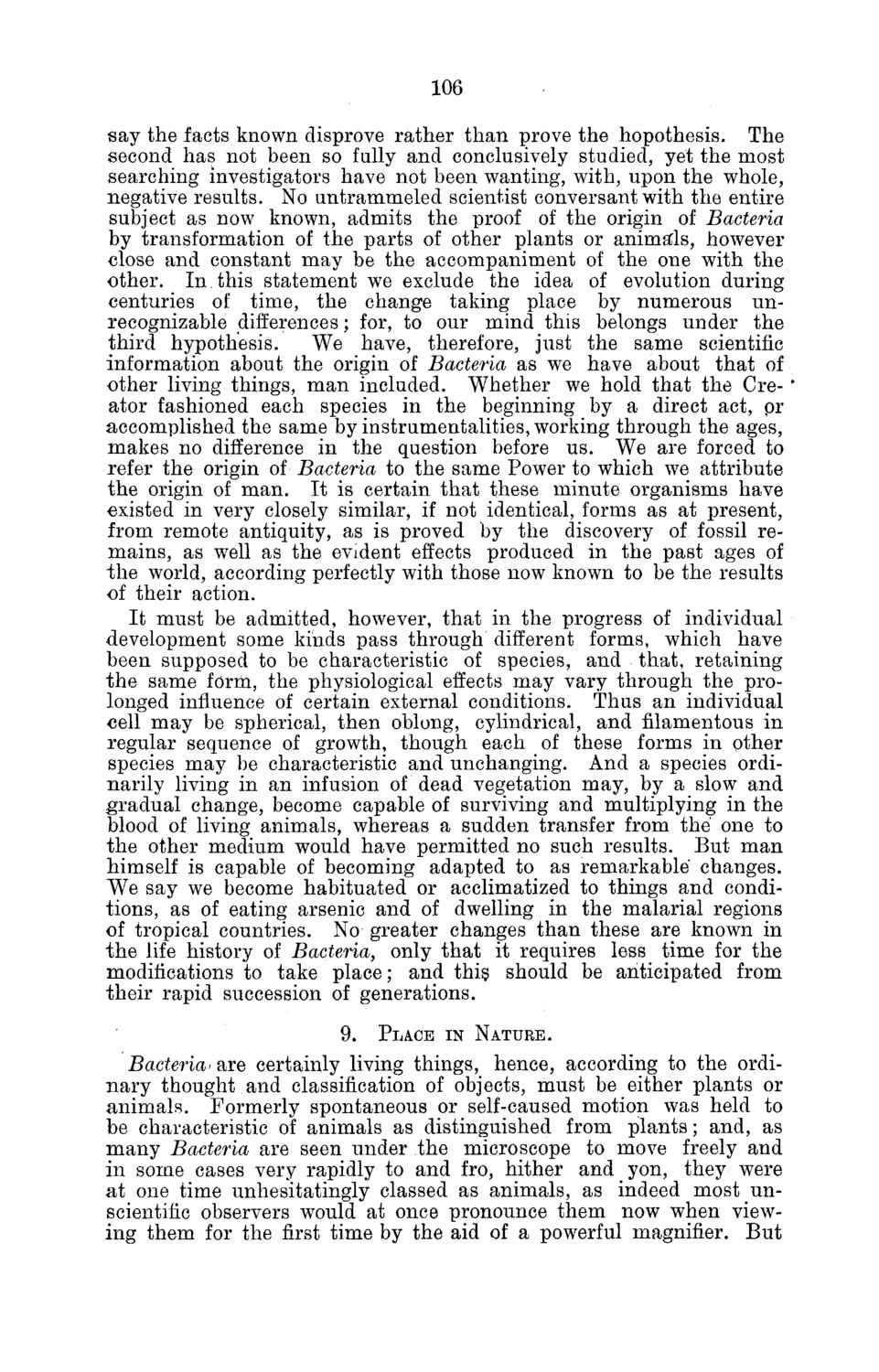| |
| |
Caption: Board of Trustees Minutes - 1882
This is a reduced-resolution page image for fast online browsing.

EXTRACTED TEXT FROM PAGE:
106 say the facts known disprove rather than prove the hopothesis. The second has not been so fully and conclusively studied, yet the most searching investigators have not been wanting, with, upon the whole, negative results. No untrammeled scientist conversant with the entire subject as now known, admits the proof of the origin of Bacteria by transformation of the parts of other plants or animals, however close and constant may be the accompaniment of the one with the other. In.this statement we exclude the idea of evolution during centuries of time, the change taking place by numerous unrecognizable differences; for, to our mind this belongs under the third hypothesis. We have, therefore, just the same scientific information about the origin of Bacteria as we have about that of other living things, man included. Whether we hold that the Cre- * ator fashioned each species in the beginning by a direct act, pr accomplished the same by instrumentalities, working through the ages, makes no difference in the question before us. We are forced to refer the origin of Bacteria to the same Power to which we attribute the origin of man. It is certain that these minute organisms have existed in very closely similar, if not identical, forms as at present, from remote antiquity, as is proved by the discovery of fossil remains, as well as the evident effects produced in the past ages of the world, according perfectly with those now known to be the results of their action. It must be admitted, however, that in the progress of individual development some kinds pass through different forms, which have been supposed to be characteristic of species, and that, retaining the same form, the physiological effects may vary through the prolonged influence of certain external conditions. Thus an individual cell may be spherical, then oblong, cylindrical, and filamentous in regular sequence of growth, though each of these forms in other species may be characteristic and unchanging. And a species ordinarily living in an infusion of dead vegetation may, by a slow and gradual change, become capable of surviving and multiplying in the blood of living animals, whereas a sudden transfer from the one to the other medium would have permitted no such results. But man himself is capable of becoming adapted to as remarkable changes. We say we become habituated or acclimatized to things and conditions, as of eating arsenic and of dwelling in the malarial regions of tropical countries. No greater changes than these are known in the life history of Bacteria, only that it requires less time for the modifications to take place; and this should be anticipated from their rapid succession of generations. 9. PLACE IN NATURE. Bacteria> are certainly living things, hence, according to the ordinary thought and classification of objects, must be either plants or animals. Formerly spontaneous or self-caused motion was held to be characteristic of animals as distinguished from plants; and, as many Bacteria are seen under the microscope to move freely and in some cases very rapidly to and fro, hither and yon, they were at one time unhesitatingly classed as animals, as indeed most unscientific observers would at once pronounce them now when viewing them for the first time by the aid of a powerful magnifier. But
| |